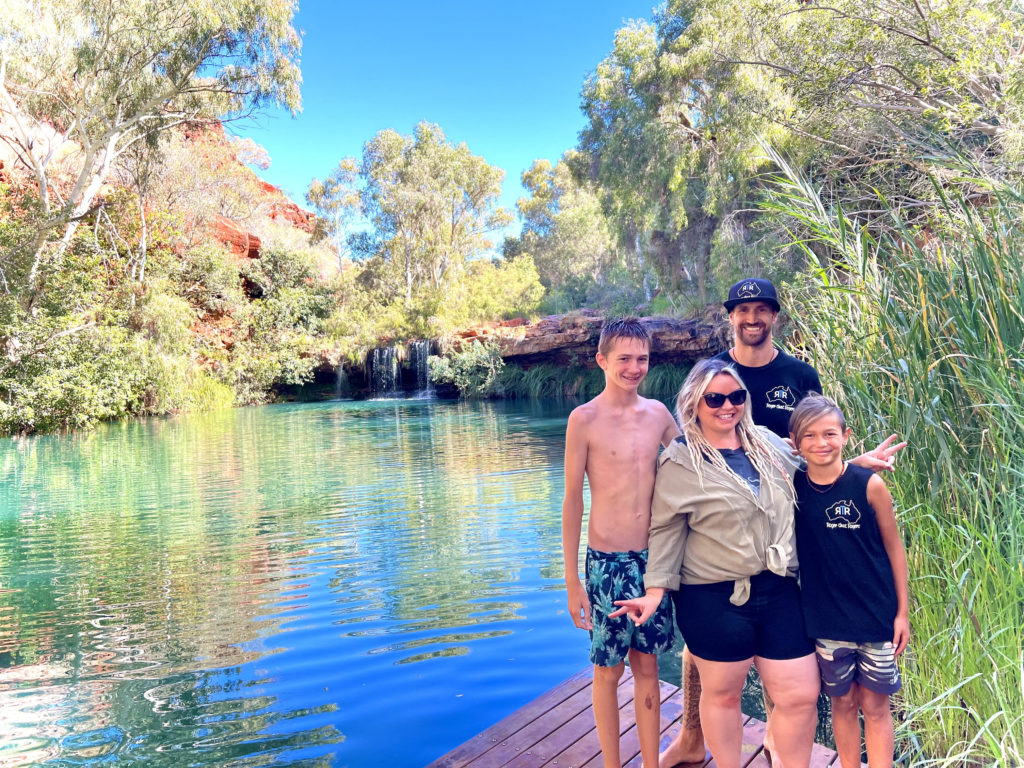/ Resources /
Advice
The 7 Learning Styles: Understanding how your homeschooler learns

Every child has unique and varied ways of learning, and corresponding styles of teaching can make a big difference in how they integrate concepts and enjoy their lessons. If you are homeschooling your child, you have a greater opportunity to discover how your own child learns and how you may be able to address their individual learning style in your homeschooling program.
The concept of learning styles was popularised by Howard Gardner’s theory of ‘multiple intelligences’ and has been applied in many educational settings. Understanding these seven main learning styles are helpful for homeschooling parents who are planning lessons and engaging their children, but there are a few things to note about the learning style concept before you take off running with it:
Learning styles are less of a static prescription for individuals and more of a way to group the most common ways that humans tend to learn. Everyone has a mix of several learning styles and some may find that certain styles work better in certain circumstances than others. Many people do tend to have dominant learning styles but they can learn to use other methods, and their dominant style may naturally change over time.
There is some debate on the validity of the theory on learning styles and whether or not kids actually perform better when studying in their supposed style. That said, there is support for the use of a variety of teaching methods and you may very well discover the ones to which your child responds best. Educators are starting to recognise that using a variety of teaching methods to address a variety of styles is the most effective, whether it is to one student or an entire classroom. Utilising more areas of the brain to integrate a concept helps us remember it better and apply it more practically. As with most things we do, even if an area of the brain is the primary section involved in an activity, we are almost always using a combination of brain areas and learning styles rather than a single area or brain function. For this reason, the Euka program provides a variety of learning opportunities when presenting a new concept. You can then choose parts of the lessons that are the best fit for your child. If the hands on activity lights up your child then focus on that, however if your child is more of a visual learner they may prefer the online activity and a video. Having the chance to adapt the program to your child’s learning style is vital.
It may be the case that your homeschool student appears to have a dominant learning style, but it’s important to note that this doesn’t mean they won’t benefit more from accessing information in a variety of styles. Try presenting your Euka material using many teaching methods and allow children to engage in various learning styles. Give your homeschool student a chance to communicate with you about which styles are working better for different subjects, or simply at different times. Often, several styles can be blended together in a single lesson.
Something else to consider is that while your homeschooler may prefer certain learning styles, you are also likely to lean towards particular teaching styles. Homeschoolers can investigate how they are best able to teach in order to communicate lessons in an easy-to-understand way. For instance, if you really struggle to read things aloud, it may be boring or confusing for your homeschooler to listen, even if they are an auditory learner. Perhaps get your student to read the material aloud or use or even try using the visual aids found in the Euka program to complete your lessons.
With all of that in mind, let’s explore the major learning style groups and what they may look like for your homeschooler.
1. visual (spatial)
Area of the brain:
Occipital and Parietal Lobes
Characteristics:
Good at visualising plans, good sense for maps and can find their way around, good spatial sense, prefer pictures and mind-maps to process information.
Teaching content:
To accommodate this learning style the Euka team has included pictures, images, spatial understanding, map-out thoughts, film clips, posters, and infographics.
2. Aural (Auditory-Musical)
Area of the brain:
Temporal Lobes
Characteristics:
Experience music with strong emotion, good sense of pitch and rhythm, enjoy music in the background while doing activities, often musicians.
Teaching content:
The Euka program includes clips to sound and music, using rhymes or songs to remember content, encourages you to play music during lessons, audio lectures, mnemonic devices, alliteration, etc.
3. Verbal (Linguistic)
Area of the brain:
The Temporal and Frontal Lobes (Broca’s and Wernicke’s areas)
Characteristics:
Enjoy writing and reading and express through spoken word, often has a large vocabulary, may be interested in public speaking, journalism, debate, writing careers.
Teaching content:
Euka includes the chance for students to create speeches and writing, having content read aloud and reading it aloud themselves, re-writing learning material, verbal instruction. Verbal learners often do well with creating their own presentations they can perform aloud.
4. Physical (Kinesthetic)
Area of the brain:
Cerebellum and Motor Cortex
Characteristics:
Animated, often moving around, use and have a good sense for body language, enjoy puzzles and creating physical models, enjoy textures and the physical world around them, enjoy sports and exercise and any activities that involve using their hands.
Teaching content:
Euka has a hands on base to learning, allowing these learners to role play, create their own diagrams, move around as necessary. Some students need to sit down to work things out whereas Kinesthetic learners may benefit from going for a walk or playing outside to wrap their head around a lesson concept.
5. Logical ( Mathematical)
Area of the brain:
Parietal lobes
Characteristics:
May be interested in careers involving maths, engineering, the sciences. These learners want to know the reason behind a concept. They also enjoy games like chess or activities that involve critical thinking. They may enjoy creating plans, itineraries and procedures that can be applied in subsequent lessons, perform more complex calculations, and categorise or group information together to make better sense of it.
Teaching content:
We build logic, reasoning, and systems into the Euka program. These students benefit from making organised lists of learning material and highlighting key points and concepts. They will enjoy learning the bigger picture concept of a lesson and understanding the logic and reasoning behind that concept rather than simply rote learning material.
6. Social (Interpersonal)
Area of the brain:
Frontal and temporal lobes and the limbic system
Characteristics:
These learners are generally most interested in extracurricular activities, working in teams, getting feedback from others, socialising, playing sports, and working issues out in a group. They tend to be great learners who others may turn to for advice.
Teaching content:
If your homeschooler has a Social learning style as their most dominant, it may work best to teach them with their siblings or other homeschoolers and to engage them in group sports or hobbies outside of the homeschool classroom. The various activities in the Euka program that require interaction with the family group in the form of games and group work is very beneficial.
7. Solitary (Intrapersonal)
Area of the brain:
Frontal and parietal lobes and the limbic system.
Characteristics:
This is often the learning style of more introverted students, but this is not a hard rule. Kids with this learning style may still enjoy socialising but prefer to learn on their own. They are often interested in setting goals and having measurable outcomes, they think independently and self-analyse and often enjoy journaling and recording their personal ideas as a way to better understand learning material.
Teaching content:
Self study – If your homeschooler has a solitary learning style, then the fact that the Euka program is written to the child themselves is likely a wonderful approach. Make sure they have adequate time to study and process the learning concepts on their own. If possible, set them up in their own space to study after you’ve gone through a lesson. You can explain an activity for them to complete and still be available for questions while allowing them their own space to process information.
If you’re having any challenges with your Euka homeschool lessons or you just want to check in to make sure you’re on the right track, get in touch with us today and our team of qualified educators will assist you.

You may also like

Welcome to the first series of Euka Stories. The purpose of this series is to give you a glimpse into the everyday lives of homeschooling families by shedding light on their challenges, triumphs, and trials. Our first story is about one of our family’s – The Rogers, who are travelling around Australia with their 2 […]
Welcome to the first series of Euka Stories. The purpose of this series is to give you a glimpse into the everyday lives of homeschooling families by shedding light on their challenges, triumphs, and trials. Our first story is about one of our family’s – The Rogers, who are travelling around Australia with their 2 […]

More and more parents are finding themselves facing the task of homeschooling without the luxury of time and research. This can occur due to various circumstances such as a sudden change in health diagnosis, a bullying incident, a family’s decision to move, or external factors that disrupt regular school attendance. Accidental homeschooling often involves parents […]
More and more parents are finding themselves facing the task of homeschooling without the luxury of time and research. This can occur due to various circumstances such as a sudden change in health diagnosis, a bullying incident, a family’s decision to move, or external factors that disrupt regular school attendance. Accidental homeschooling often involves parents […]

It may sound unnecessary to help your child find their voice when they are constantly demanding and outspoken, however helping a child find their voice means more than letting them say whatever they like, whenever they like. Finding their voice allows them to communicate effectively and appropriately. It is supporting and empowering them to develop […]
It may sound unnecessary to help your child find their voice when they are constantly demanding and outspoken, however helping a child find their voice means more than letting them say whatever they like, whenever they like. Finding their voice allows them to communicate effectively and appropriately. It is supporting and empowering them to develop […]





